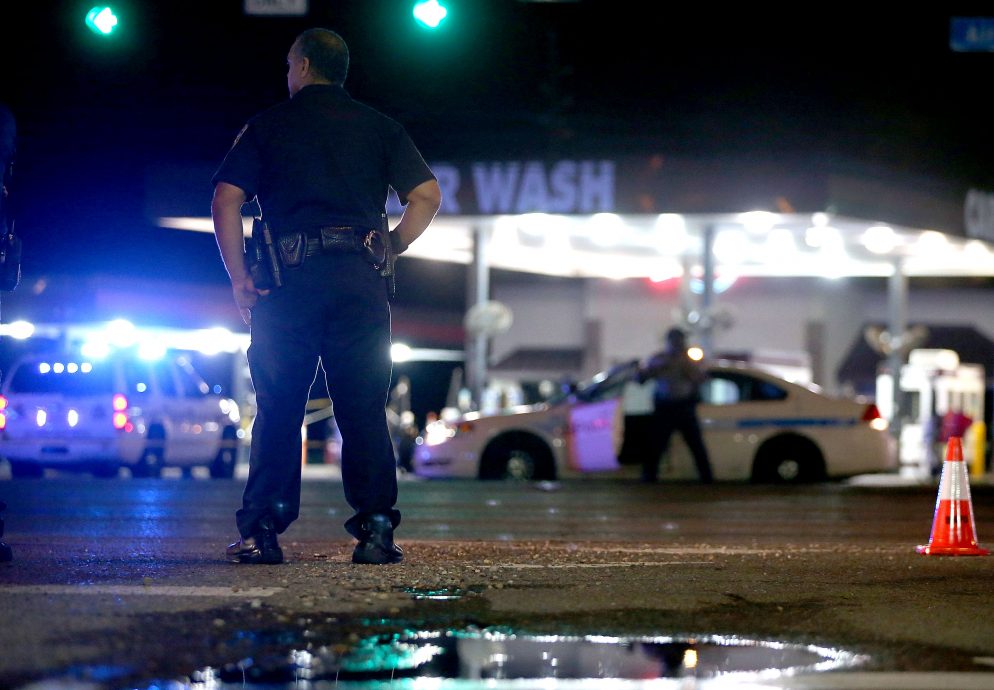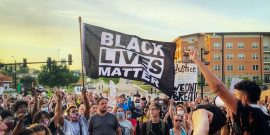Is there a War on Cops?
Could a book entitled The War on Cops be more disturbingly prescient? Within just a few weeks of the release of Mac Donald’s work on June 21, the country reeled in horror at the cold-blooded murder of five police officers in Dallas on July 7, followed by the assassination of three more officers in Baton Rouge just ten days later. Americans might be forgiven for taking Mac Donald’s title literally.
The War on Cops is not just about police, however. It is a polemic aimed at the Black Lives Matter narrative, which Mac Donald believes is undermining the effectiveness of our entire justice system. The BLM narrative sees racism at work throughout the system and decries the differential treatment of blacks and whites at the hands of police, judges, jails and prisons. Racism, according to this narrative, explains why African Americans are abused by police more than whites (if indeed that is true), arrested more than whites and incarcerated more than whites (both true in proportion to population). The War on Cops rebuts each of these claims and does so uncompromisingly and, in my view, effectively. Unless your mind is completely closed on this issue you owe it to yourself to read it.
Mac Donald’s contra narrative should be called “Black Crime Matters,” because at virtually every turn she relies on high black crime to explain the disparate treatment of blacks. Do police have more confrontations with African Americans? This is explained by their excessive violations of the law compared with whites and Hispanics and their concomitant suspicious behaviors. Do police patrol more in black neighborhoods leading to more confrontations and arrests? Yes, but that’s where the crime is; police are deployed more to communities with more crime. What’s more, Mac Donald asserts, the residents of color (at least the law-abiding ones) prefer it that way; they want more police protection, not less. The black crime rationale also accounts for the disproportionate number of African Americans incarcerated. Blacks do more serious crime per capita than other groups, so they are incarcerated more.
Mac Donald’s argument gains strength from the enormously high rates of black victimization, and she might have given this even more emphasis. For instance, mortality data from the Centers for Disease Control – untainted by any criminal justice system bias – indicate that blacks were, from 2000 to 2014, eight times more likely than non-Hispanic whites to be homicide victims. And data from 1976 to 2005, unlikely to have changed much in subsequent years, show that 94 percent of all of those black victims were killed by other African Americans. Figures like this support Mac Donald’s claim that a strong criminal justice system is in the interest of the black community. As she puts it: “the best protection that the law-abiding residents of urban neighborhoods have is the police. They are the government agency most committed to the proposition that “black lives matter.” The relentless effort to demonize the police for enforcing the law can only leave poor communities more vulnerable to anarchy.”
Persuasive as this might be this argument will remain a hard sell. Seventy percent of blacks polled by CBS/New York Times in July, 2016 (before the shootings in Dallas and Baton Rouge), said they support Black Lives Matter; 37 percent of whites concurred. As long as police abuses or apparent abuses of blacks get extensive media coverage, and as long as the Black Lives Matter racialization thesis continues to get support from key American institutions and individuals – including the White House, the New York Times and other influential media, university faculty, and the current Democratic candidate for president – pro-law enforcement arguments will be rejected out-of-hand by many. This despite the fact that half the citizens killed by police are white, whereas one quarter are black, and a recent study by a black Harvard economist, Roland Fryer, found that African Americans were 24 percent less likely to be shot at by police than whites.
In an ideal world, of course, we would reduce the police abuses and make law enforcement more effective. Unfortunately, things don’t seem to work that way.
Virtually every hot-button issue in criminal justice is discussed in this book, and Mac Donald’s slant, backed by data (unfortunately, however, without notes or bibliography), will make you think twice about the standard interpretations. Here are several examples.
- Ferguson: The actual evidence “eviscerated” the pro-Michael Brown, anti-Darren Wilson narrative, while the Justice Department’s report on the Ferguson police unjustifiably condemned law enforcement for racially motivated encounters with blacks without taking black offending into account.
- Baltimore: The response to the Freddie Gray riots was “shamefully hesitant,” and the notion that the military-style police presence provoked violence is “ludicrous.” Media coverage was “riot porn,” with every act of thuggery “lasciviously filmed” for viewers.
- The Ferguson Effect: As cops feared becoming “the latest YouTube pariah” they began to disengage from proactive policing. “Criminal summons and misdemeanor arrests for public-order offenses plummeted.” A “bloodbath ensued” in 2015, and blacks paid the price.
- Police Shootings of Blacks: The total number of blacks killed by police is dwarfed by murders of blacks by private citizens, mainly other African Americans. The vast majority of black victims of the police were resisting arrest, assaulting officers or threatening the police or bystanders.
- Stop, Question and Frisk: After NYPD’s SQF policy was terminated by a federal judge street stops declined 95 percent. As a result, murders and shootings surged in New York until Commissioner Bratton saturated the shooting hot spots with officers.
- Goffman’s On the Run: Alice Goffman’s acclaimed book shows the cultural breakdown within the black underclass, but she is incapable of acknowledging it. Instead she blames the legal system for crime and dysfunction.
- Drugs, Blacks and Prison: Crack penalties did become “arbitrary and excessive” and reductions are “appropriate,” but blacks are imprisoned mainly for violent and serious property crimes. If you remove all drug offenders from state prisons, the percentage of black inmates (37.5 percent) would drop one-half a percentage point, hardly a significant difference.
- Mass Incarceration: The U.S. incarceration rate is higher than Europe’s because our gun homicide rate is 19.5 times higher. The system isn’t “mindlessly draconian”: For every 31 felony convictions 69 arrests for violent crime are released. Twenty-seven percent of convicted felons are released on probation and 37 percent are sent to jail, not prison, where they will be released in well under a year.
I have two issues with Mac Donald’s arguments, the first of which partially undercuts her thesis. She claims that Broken Windows policing, which calls for enforcement of laws against public order, such as trespassing, drinking, smoking reefer, or urinating in the street, shrank serious crime since the 1990s by reducing the “air of lawlessness” and “get[ting] criminals off the streets before they commit bigger crimes.” This is doubtful. Broken Windows policing has certainly helped reclaim public spaces for law-abiding citizens, unquestionably a great boon for our cities, but how it might reduce serious and violent crime is a mystery. Arresting or stopping and ticketing these low-level offenders results in no incarceration to speak of, unless the violator has outstanding warrants for other, more serious, offenses. The only other way such confrontations might reduce serious crime is if the police search such violators and seize bunches of illegal guns. (Stop, Question and Frisk, which aimed at weapon seizures, and police saturation of high crime and drug market locations are a different matter. These probably are effective in reducing serious crime – but I wouldn’t classify them as Broken Windows policing because they aren’t directed at minor public order offenses.)
If Mac Donald has exaggerated the benefits of Broken Windows policing then the 2015 crime increase may have nothing to do with the Ferguson Effect or police demoralization. This doesn’t make the undermining of law enforcement any the less real, but it does make it less devastating than she claims.
The other issue concerns the causes of high levels of African American crime. Mac Donald contends that we need to address “the real cause of black violence: the breakdown of the family.” Boys need fathers to raise them, she says, but over 72 percent of black kids are born to single mothers, three times the illegitimacy rate when Daniel Patrick Moynihan wrote presciently on this issue in 1965.
There is no question that the collapse of the two-parent black family in the 1960s correlated with a massive rise in African American crime. But black crime was high since the 1890s, when over 70 percent of black kids were living with two parents – which was the case through the 1950s. Moreover, black homicide rates fell by 50 percent from 1980 to 2009, while the proportion of births to unmarried black women rose from 57 percent (1979) to 73 percent.
The preceding, however, is not a reason to pass up Heather Mac Donald’s War on Cops. To the contrary, it’s a good reason to discuss the issues it so eloquently raises.



